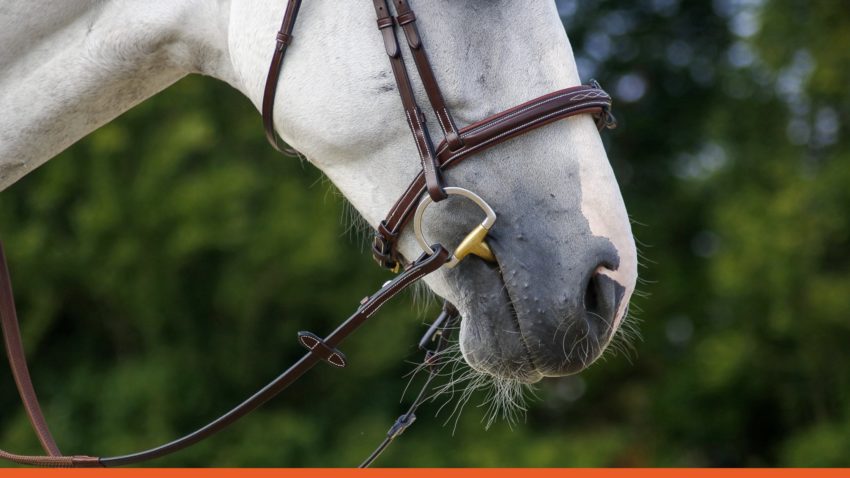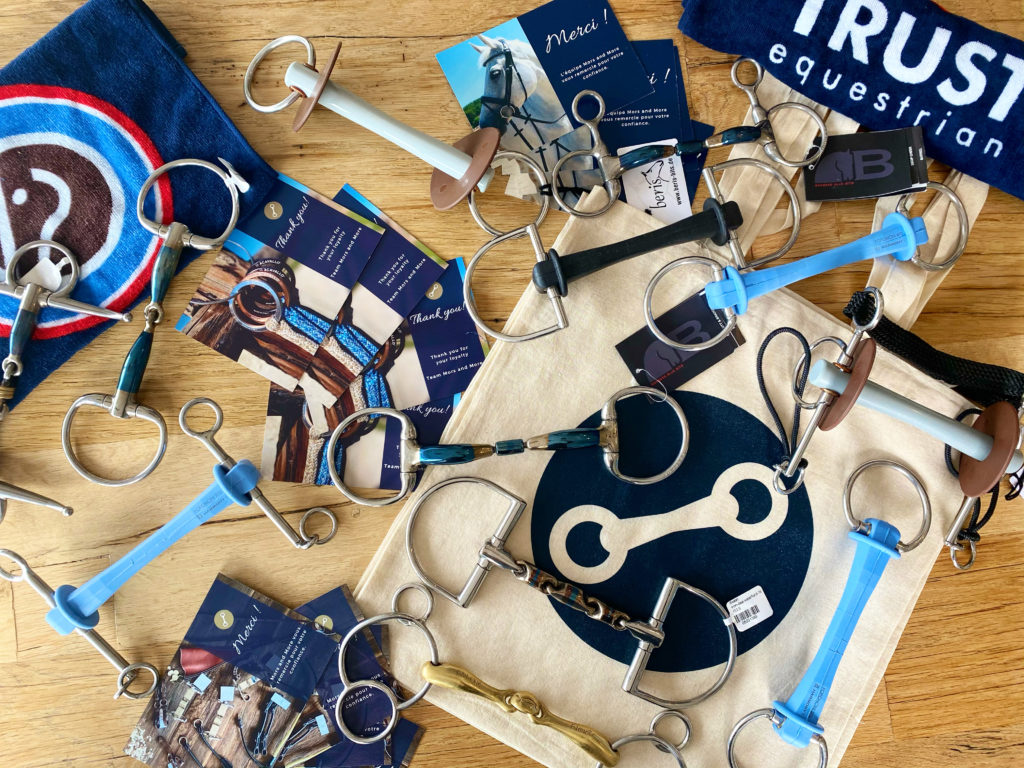
The complete guide to choosing the right bit for your horse
Choosing the right bit is an essential step in horseback riding. It ensures optimal communication between the rider and the horse, while maintaining the horse’s comfort. However, with the wide variety of models available, it’s not always easy to know which bit or bridle to choose. In this guide, we explain how to make the right choice based on your horse’s conformation, the discipline practiced, your riding level, and the materials available.
What is a bit and what is its role?
The bit is a key device in communication between the rider and the horse, placed in the horse’s mouth. It transmits signals through the reins, acting on sensitive areas such as the corners of the lips, the bars, the tongue, and the palate. A well-chosen bit allows for precise transmission of the rider’s intentions, while also respecting the horse’s oral physiology, avoiding any discomfort that could interfere with the communication between horse and rider.
There are many types of bits, each with specific characteristics suited to different conformation types and equestrian practices. The choice of a bit should be made based on your horse’s needs, your discipline, and your technical level.

How to choose the right bit?
Here are the criteria to consider when choosing the ideal bit for your horse.
1. The morphology of your horse’s mouth :
Before choosing a bit, it’s important to observe your horse’s mouth. Each horse has a different anatomy, and a bit that works for one may not be suitable for another. The key points to analyze are:
- Mouth width: A bit that is too narrow will pinch your horse’s mouth, while one that is too wide will not be stable and may slip.
- Palate shape: Some horses have a high or low palate, which can affect how the bit will come into contact with their mouth.
- Sensitivity of the bars and tongue: If your horse has a sensitive mouth, it’s better to choose a soft bit that distributes pressure over a larger surface area, such as a bit with wide rings or one made of resin.
2. The discipline practiced
The bit also varies depending on the equestrian discipline practiced. Each discipline has its specific requirements in terms of control and comfort for the horse.
3. The rider’s level
The rider’s level also plays a key role in choosing the bit. An experienced rider will be more attuned to the horse’s reactions and can adjust their actions accordingly. They may choose a more dynamic and less flexible bit, while a beginner rider may be recommended a softer bit to reduce the risk of clumsiness and ensure the horse’s comfort.
4. The materials and shape of the mouthpieces
The materials and shape of the mouthpieces directly influence the horse’s comfort. Here is an overview of the different available options:
- Metal: Metal bits, particularly those made of stainless steel or steel, are durable and responsive. However, some horses may find them too cold or rigid, which can cause discomfort.
- Resin and plastic: These materials are softer and provide a gentler feel for the horse. They are often used for horses with sensitive mouths.
- Leather: Leather is a natural and soft material, highly appreciated by some horses. It also provides a “tempered” feel, which is beneficial during the winter season.
The thickness of the mouthpieces also varies depending on the horse’s needs:
- Thin/thick: To ensure the horse’s comfort, it is essential to reduce pressure in the mouth. Unlike thick bits, thinner ones help spare the horse from unnecessary pressure, even without the rider’s aids.
- Tongue clearance or not: Analyzing the horse’s mouth and sensitivities helps determine the ergonomic choice of the bit. The tongue, being a muscle, tends to become thicker with age, especially if pressured by an ill-fitting bit. Providing tongue clearance allows more freedom, thus facilitating the horse’s connection from head to feet. A horse that is calm with its tongue, and not “fighting” its bit, will function more optimally in its body.
How to test and adjust the bit?
It all comes down to observation and feeling. You need to observe your horse’s potential reactions: does he shake his head? Does he lean on the bit? Does he have any injuries or irritations? Is he “fighting” the bit? What is the quality and fluidity of his movement? Does he have good balance? Does he respect the bit? These are all questions to ask to determine whether or not the equipment needs to be reassessed.

Find the ideal bit for your horse with Mors And More!
Specialist in bits and bridles, Mors And More offers the widest selection of bits to help every rider find the most suitable mouthpiece for their horse.
The mission is to do everything possible to ensure that the bit becomes a true tool for achieving harmonious communication with the horse. This is achieved through:
- Direct or indirect support in choosing the right equipment. With ongoing training through daily exchanges with many riders from all backgrounds, the team is able to successfully guide riders toward the right equipment and also offers a network of professional bitfitters for physical fitting services.
- Selection: Mors And More offers the widest choice so that equipment is never a limitation, eliminating the “default” bit choice.
- The ability to confirm a “theoretical” choice in practice. Riders can convert their purchase into a rental within 15 days after receiving it if the trials are unsuccessful, allowing them to gather new information to make a more suitable choice.
Visit www.morsandmore.com
Conclusion
Choosing the right bit is a crucial step in improving communication with your horse and optimizing its performance while ensuring its well-being. There is no universal bit, and each horse has specific needs based on its conformation and the discipline practiced. Take the time to observe your horse, test different models if necessary, and consult professionals to find the one that suits him best.
The bit is a valuable tool for the rider, but it will never replace the finesse of an expert hand and balanced riding. Choose it carefully to ensure the best comfort and performance for your horse.